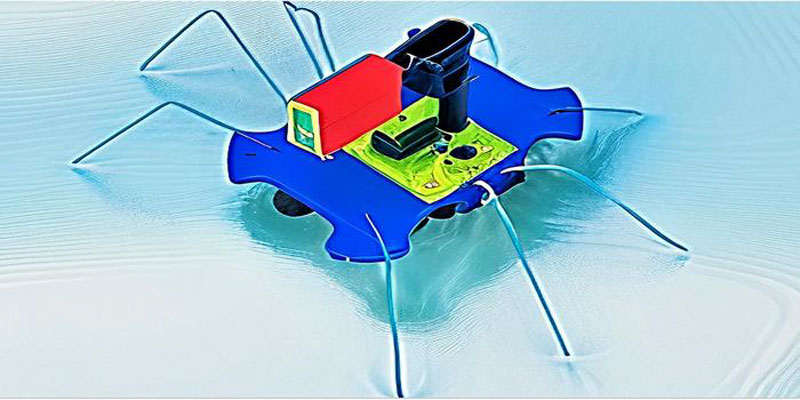As part of DARPA’s Ocean of Things program, scientists from Binghamton University have developed a miniature robotic platform powered by bacteria. A robotic water strider with a mass of sensors and radio communications will be able to glide along the surface of the water for decades, receiving electrical power for its systems from the process of bacterial life as part of a special battery.

Image source: Professor Seokheun “Sean” Choi
Researchers have found the opportunity to combine several strains of bacteria in one battery, taking advantage of the advantages of some and others. Although the work has not yet been completed, scientists say that in this way it is possible to increase the power and energy density of the bacterial food source.
The battery allows water to enter, bringing with it moisture and nutrients. Under favorable conditions, bacterial spores located in the battery begin to multiply and at the same time generate electricity, which is characteristic of the vital processes of certain types of microorganisms. While they generate electricity, the autonomous “bug” does its job – it floats in the right direction, records the characteristics of the environment and living and inanimate objects floating (flying) in the sensitivity zone of the sensors. Then it transmits the collected information wherever it is needed, if there is enough power.
Getting into an unfavorable environment causes the bacteria in the battery to reduce activity and go into a state of spores until better times. Thus, a battery powered by bacteria could potentially remain operational for decades and even up to 100 years. In laboratory conditions, scientists were able to obtain up to 1 mW of power from a prototype battery. This is enough to move the miniature robotic water strider and to operate its main sensors. Scientists will continue research to achieve even more impressive characteristics from the biobattery. They argue that a more careful selection of a combination of strains of promising bacteria will help with this.